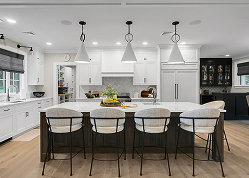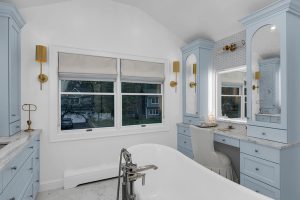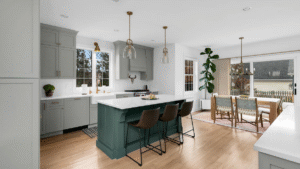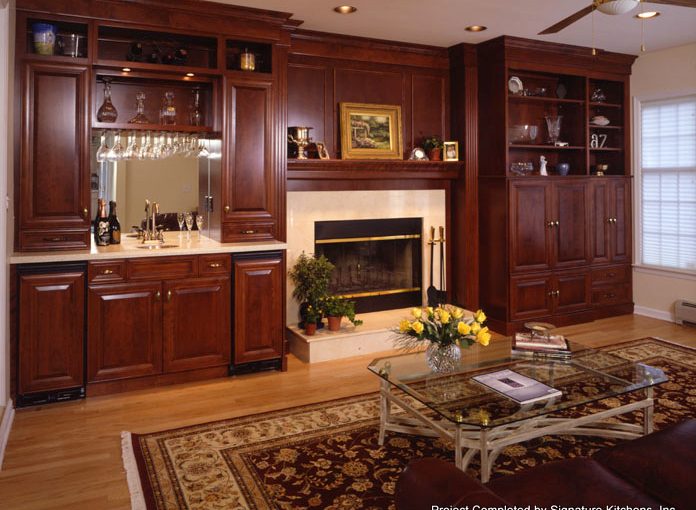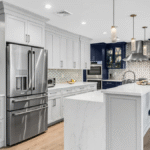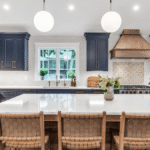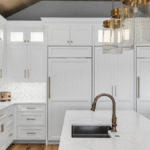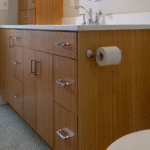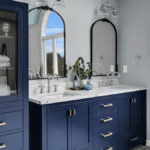Cherry cabinets have been consistently popular for decades despite other trends going in and out. Firstly, it should be noted that “cherry” is in fact a wood species, and not just a color. Cherry wood, especially “select cherry” from higher end custom cabinet manufacturers, exhibits a very even, soft, distinctive wood grain that looks great completely natural or stained. Cherry wood is typically chosen for the aesthetic appeal of its wood grain. Left unstained, cherry cabinets will eventually darken and turn the darker areas of the wood a reddish brown, and lighter areas more yellowish brown. (try searching online for “natural cherry darkening” to see for yourself)
When people hear “cherry,” they usually envision a rich reddish-brown color, which means a stain was applied. These stains come in a variety of shades depending on the manufacturer, and can have names like cinnamon, merlot, or crimson. This will make the wood appear with the iconic red/brown finish. Cherry wood can be stained with any number of different colors however, just like any other wood species, and this can lead to confusion. Kitchen cabinetry can appear dark brown, grey, yellow, etc. and still be cherry wood, observable by looking at the wood grain.
When you order cherry cabinetry from a custom manufacturer, the doors, drawers, and usually the molding are solid cherry wood, finished either natural, or with the stain of your choosing. the cabinet boxes, however, are almost never solid species wood. Across the board it is cost prohibitive to make the entire cabinet out of solid species wood. The boxes themselves are made of either plywood or particle board, and have a thin layer of real cherry wood (a veneer) glued to the surface and stained in the same manner.
Cherry wood cabinets are usually never painted. The reason for this is simple. Cherry wood is more expensive than other species that are just as good for construction (like maple and birch) and if you are going to paint a cabinet, you will not be able to see the distinctive wood grain which you are paying for. A painted solid color can be interesting, and maybe even called cherry, but the wood inside is not likely cherry. So, if you currently have cherry cabinets and are thinking of painting over them, make sure you appreciate what you are losing!
When you are selecting cabinetry, and are drawn to the wood grain and color of cherry, there are a couple of things to be mindful of:
- By default, the insides of cabinets typically come with a neutral laminated wood veneer that is a different wood species, and much lighter in color than the stained exterior. This is noticeable when the cabinets are open. You can have the insides match for an additional charge.
- Even if the cabinet is stained, and not a natural finish, it will still darken, or “mellow” over time from exposure to natural light. This is normal and should be expected.
- If you ever repair or add-on to parts of your kitchen in the future, be mindful that a color match should be advised so the new items blend in with the rest of the kitchen.
- Be wary of deals that seem too good to be true. Cheaper cabinet lines may have doors, drawers, cabinets, and moldings that appear to be cherry with a similar wood grain, but may only be a veneer over cheaper material. Shop around and make sure you know what you’re getting.


